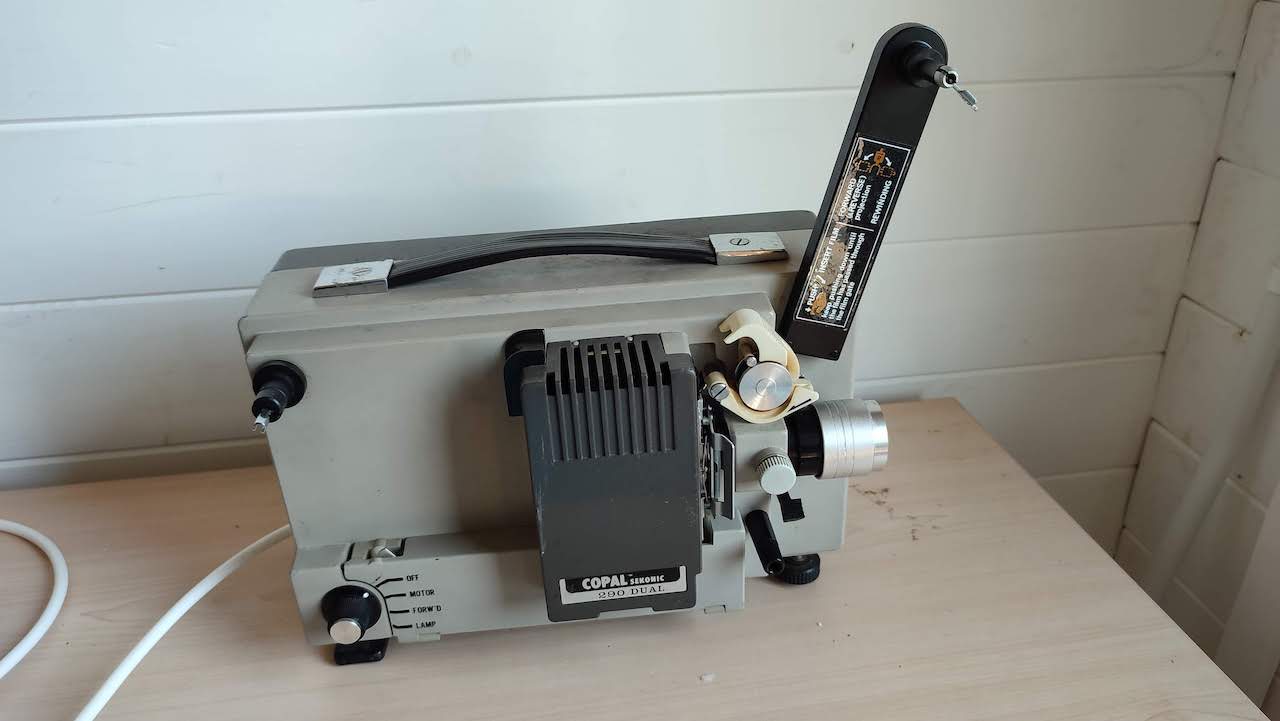The uncomplicated Copal Sekonic 290 D dual format projector from about 1968
The Copal Sekonic 290 model D projector discussed here was made in Japan in about 1968 and was the simplest version of a projector design that Copal eventually made in several different variants.
About my Copal Sekonic 290 D Projector
I actually bought my copy of the Copal Sekonic 290 in order to rip it apart and use it for a dual format telecine machine. I have a machine currently which is based on an old Eumig P8 standard 8 projector unit, but I wanted a machine that will work with both standard 8 and super 8. Having looked at some pictures on eBay, I decided that the 290 should be a good chassis to convert.
When I received the unit, very well packaged from the eBay seller, I confirmed that it should probably do the job I want, but before I start to convert it I wanted to make sure that the machine is working.

The first thing I needed to do was change the mains wiring because the original rubber coated mains lead was in pretty poor shape1.
I happen to have a reel of white, three core mains lead, so I cut a length of a couple of meters and rewired the mains input side so that it’s less dangerous. Once I’d done that and replaced the bulb which was blown2, I found that the motor runs and the unit will auto-feed a film and project it, although it doesn’t seem to be running at the correct speed. This is probably down to a stretched drive belt and a build up of dirt in the mechanics, so I’ll give it a service before I start the conversion
Photos of the Copal Sekonic 290 D Projector
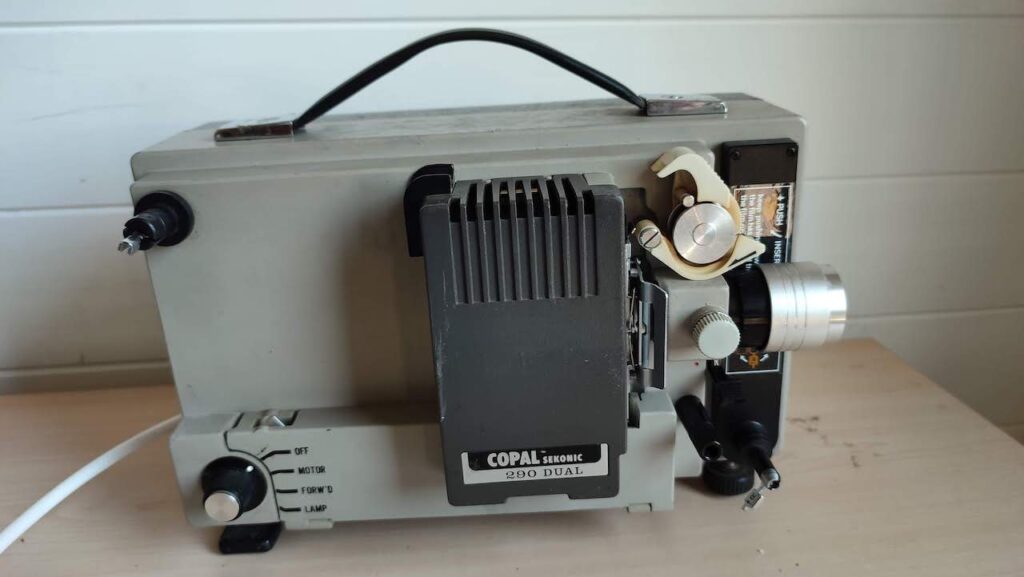
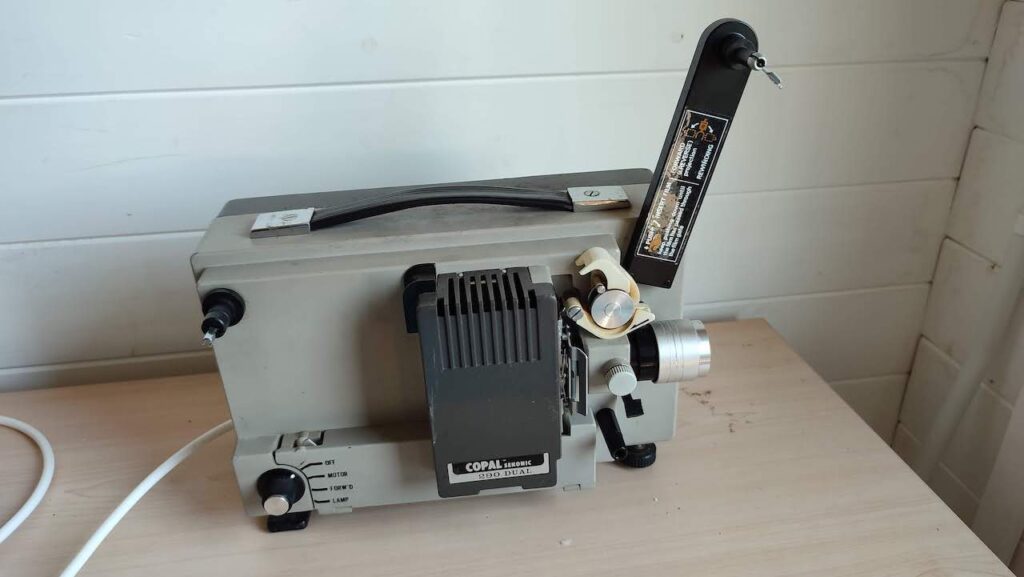

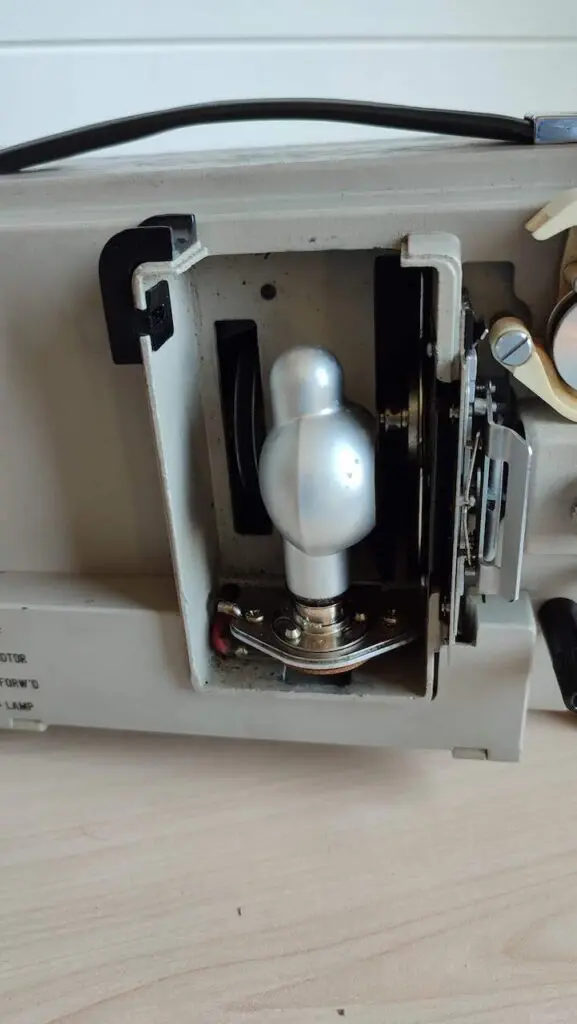



Description of the Copal Sekonic Projector
The manufacture of the projector, Copal, is more famous for the production of shutters than projectors, although I did find some old ads for cine cameras made by Copal as well as projectors, so perhaps their two main lines of business were shutters and cine equipment.
As I said in the introduction to this piece, the projector is quite a simple unit. There are very basic controls and the mechanical design is also uncomplicated.
I should just point out that the following is a description of the projector based upon my usage of my example – it’s possible that some of this is inaccurate because I don’t have the manual, and some aspects of the projector’s operation are a bit odd, so perhaps my example is faulty.
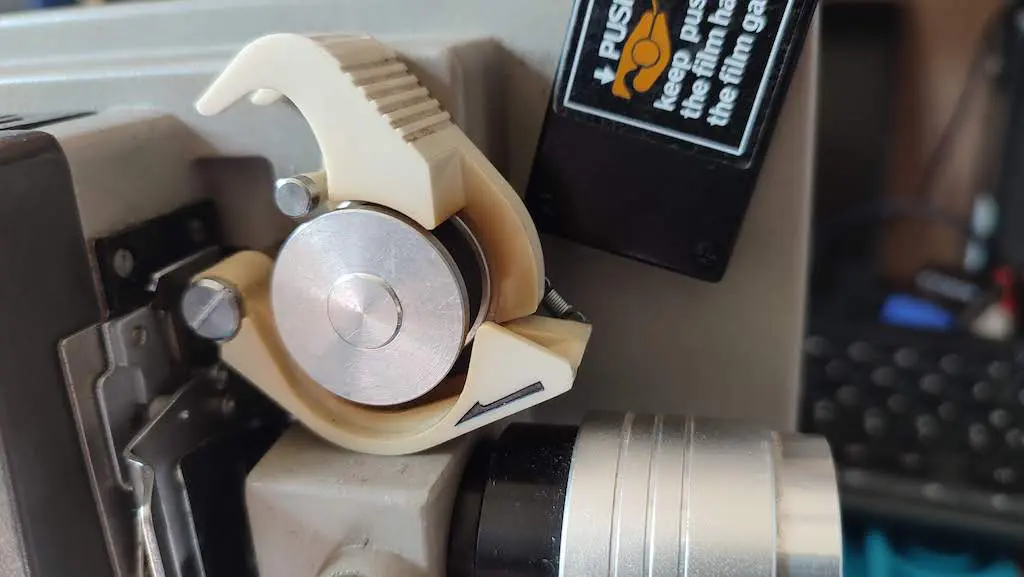
The unit is an auto-feed projector, so you don’t need to manually position the film through the various sprockets and the film gate, you just present the film at the bottom of the white, plastic auto-feed system on the front of the projector and hold the back of the plastic piece down whilst the motor is running. The pressure wheel the film feeds into pulls the film through the projector and into the film gate and then along a path at the bottom of the projector and out onto the take-up reel at the back.
I found this to be surprisingly good and even on films with some serious damage to the leader, it still successfully threaded the film. I think the fact that the pressure wheel pushes the film means the projector is much gentler on the film than a conventional auto feed which pulls via the sprocket holes and can carry on forcing film into the mechanism even if there is a blockage.
The main control wheel has four marked positions, Off, Motor, Forward, Lamp and on first glance at my example of the projector, the Motor and Forward positions do essentially the same thing. I looked at the clutch which engages the feed and as far as I could tell, nothing changes between the Motor and Forward positions, but I figured there must have been a reason for providing both options and it turns out there is – more on that in a bit.
There is no reverse projection setting as far as I can see, although a sticker on the feed arm makes mention of forward and reverse projection. There is an Icon which seems to show that reverse projection is possible, but I haven’t worked out how it’s done and I suspect it isn’t possible and the icon refers to rewinding the film.
When showing a film the projector is good enough, but there are no options for changing the speed and the format selection doesn’t seem to alter the speed, so standard 8 and super 8 are both played at the same speed. The only thing the format change switch does is move a different film gate in place so that Super 8 film is projected through a slightly larger gate, and move the film advance claw across slightly, so it finds the sprockets on Super 8 film.
The 50W 8V lamp the Sekonic 290 uses is not incredibly bright, so to get a viewable image of any size you need to make sure the room you are using for projection is well blacked out. If you can do this, the projector gives reasonable results, and is pretty quiet in operation.
The projector has a zoom function, which is obtained by rotating the front of the lens, and the image is focused with a small grey knob at the back of the lens.
Once you’ve finished showing the film, the projector can wind it back onto its original reel by threading the film straight from the take up spool onto the feed spool, over the top of the projector, and selecting the Motor option on the switch.
To get it to work and actually pull the film back onto the reel, you need to move the reel retention lever on the original feed reel, over to the correct side. There must be a mechanism at the back of the reel housing which is engaged when this lever is moved because one way is for normal projection and the other way is for rewind. This is what the sticker on the arm of the projector is referring to.
My Assessment of the Copal Sekonic 290 Dual
I found the Sekonic 290 to be a competent projector for both standard 8 and super 8 films, but it would not be my projector of choice for a couple of reasons. First, because there is no film speed adjustment either standard 8 or super 8 films are being shown at the wrong speed (or possibly both – since standard 8 is at 16 fps and super 8 18 fps possibly the projector runs at 17 fps)
Secondly, the lamp is not bright enough to easily see the projected image at a reasonable size unless the room is very well blackened. Also, the price of the 50W lamp the projector uses is now very expensive since they went out of production many years ago.
To be fair however, I think this model was the very bottom of the Copal Sekonic range, and was made as an entry level dual standard projector, so possibly other units in the range were better and as a positive point, the auto-feed mechanism was one of the best I’ve used in my small collection of cine projectors.
Discover more from Everything Vintage
Subscribe to get the latest posts sent to your email.

